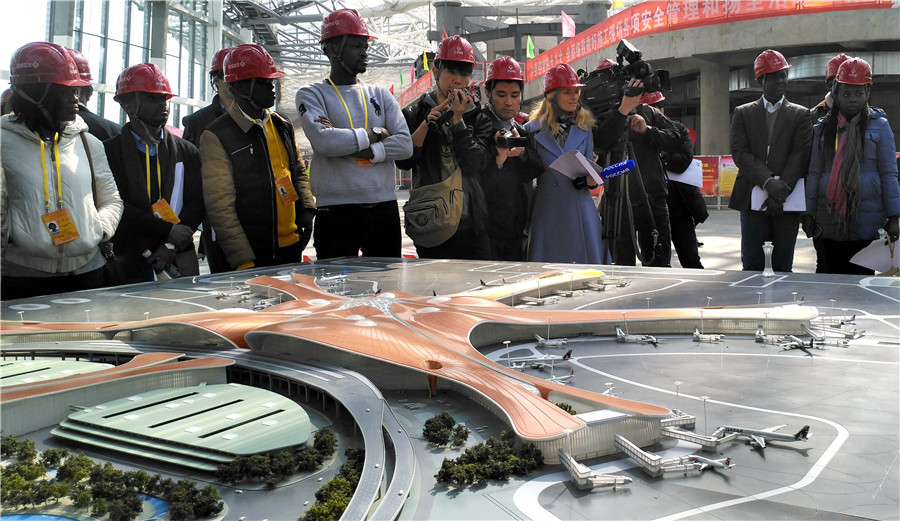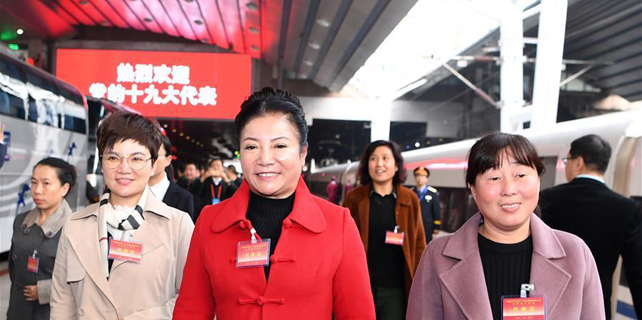Beijing's new airport getting its roof
 |
|
Journalists listen to a presentation of the progress being made on Beijing's new airport, south of the city's center, on Monday. The roof and glass are being installed on the main terminal, and trial operations are to begin in October 2019. [Xing Yi/China Daily] |
The roof and glass at the main terminal building of Beijing's new airport are being installed, with crews attempting to seal off the building from weather by the end of this year or soon thereafter, the airport's spokesman said on Monday.
"The internal decorations and installation of electromechanical equipment will begin as soon as the terminal building has been sealed," said Zhu Wenxin, the airport's spokesman.
As of the end of September, more than 90 percent of the earthwork had been completed, and 95 percent of supporting projects, such as bridge foundations, were finished, he said.
The new airport, whose construction began at the end of 2014, is to begin trial operations in October 2019.
"Once completed, it will be Beijing's second international aviation hub, serving the capital and nearby residents along with Beijing Capital International Airport," he said.
The new facility is located between Beijing's Daxing district and Langfang, Hebei province. It's 46 kilometers from Tian'anmen Square, 67 km from the capital airport and 85 km from Tianjin Binhai International Airport.
It will be accessible via public transportation, including high-speed rail, intercity railway, subway and freeway. It is also designed to be passenger-friendly, with the farthest boarding gate 600 meters from the center of the terminal-about an 8 minute walk.
By 2025 it's expected the airport will handle 72 million passenger trips, 620,000 departures and arrivals, and 2 million metric tons of cargo and mail annually.
The long-term goal is 100 million passenger trips and 4 million metric tons of cargo and mail.
Beijing Capital, the busiest airport in China, handled more than 90 million passenger trips last year, but demand exceeds the airport's design capacity. Passenger throughput was 94.4 million in 2016, though the facility was designed for 82 million, said Han Zhiliang, president of the airport, at a conference in September.
Feng Zhenglin, head of the Civil Aviation Administration of China, said the country aims to build a world-class multiple airport system to better serve major metropolitan centers. Airports in Beijing, Tianjin and Hebei, for example, are positioned to serve the diverse needs of the cluster, Feng said.













